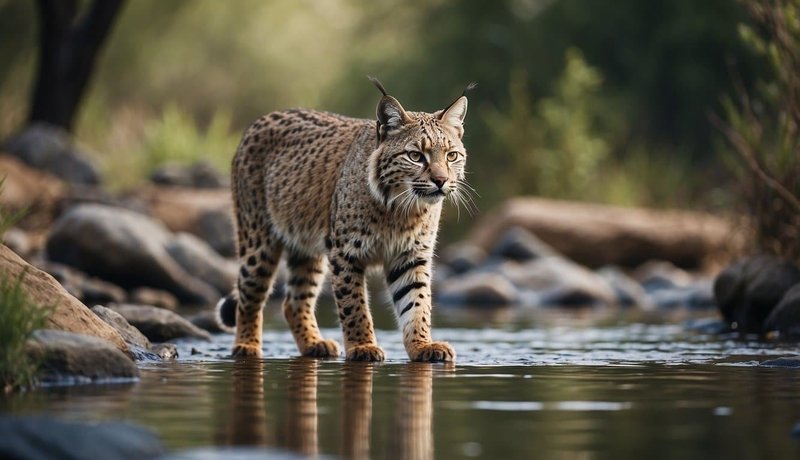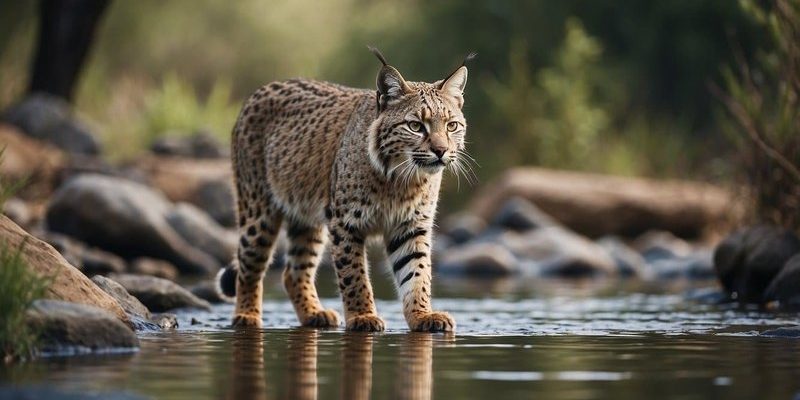
Imagine having a toolbox filled with various tools, each designed for a specific task. Bobcats are like that—each ability they possess helps them tackle the challenges of their environment, from hunting to navigating their territory. So, let’s dive into the fascinating world of bobcats and explore their cognitive strengths and behaviors.
The Intelligence Spectrum of Bobcats
Bobcats might not have the same brainpower as housecats or dogs, but they certainly shine in their own ways. They have a unique set of skills that allow them to adapt to changing environments and make smart decisions. For instance, studies suggest that bobcats exhibit keen problem-solving abilities. When faced with obstacles—like finding food or avoiding danger—they can strategize and come up with solutions that work in their favor.
Moreover, bobcats utilize a range of communication techniques to interact with each other. They use sounds like growls, yowls, and even purrs to convey their feelings and intentions. This level of communication indicates a certain degree of social intelligence. It’s amazing to think about how these vocalizations allow them to establish territory, attract mates, or signal warnings to their peers.
Understanding the intelligence of bobcats also means recognizing their ability to learn. Bobcats can adapt to new hunting methods or shifts in prey availability. If one strategy doesn’t work, they’re quick to switch things up, showcasing their flexible and intelligent approach to survival.
Navigational Skills and Spatial Awareness
One of the standout features of bobcat intelligence is their remarkable navigational skills. If you’ve ever tried to find your way in an unfamiliar area, you know how tricky it can be. Bobcats, on the other hand, seem to have an innate compass. They are skilled at remembering the landscapes they traverse, including the locations of food sources and potential shelter.
This spatial awareness is vital for their survival. For instance, if a bobcat spots a good hunting ground, it’s able to remember how to return to it later, even if it’s been a while. Their keen sense of smell also plays a big role here. It helps them track prey and recognize familiar scents in their environment, guiding them through complex terrains without getting lost.
Just think about it: a bobcat can navigate dense forests, steep hills, and even urban areas with ease. This natural ability to orient themselves in various landscapes is a testament to their intelligence and adaptability as predators.
Hunting Strategies: The Art of the Chase
Hunting is one area where bobcats truly excel. They are solitary hunters, which means they rely on their skills rather than teamwork. But don’t mistake their solitary nature for a lack of intellect—bobcats are *masters of strategy*. They tend to use stealth and patience when stalking their prey. This method requires not just physical agility, but also mental sharpness.
For example, a bobcat might use ambush tactics, hiding behind bushes or rocks until the perfect moment to strike. They assess their surroundings, gauge the movements of potential prey, and then decide when to pounce. It’s a bit like playing a game of chess; they think several moves ahead and ensure they’re in the right position for a successful catch.
Interestingly, bobcats also show a level of adaptability in their hunting preferences. They don’t just stick to one type of prey. Depending on the season and availability, they can switch from hunting rabbits and rodents to birds and even deer. This flexible approach is a clear sign of their cognitive abilities in action.
Social Behaviors and Territoriality
While bobcats are primarily solitary creatures, they do exhibit fascinating social behaviors worth noting. They maintain home ranges and mark their territory using scent markings (like urine or scratch marks) to communicate with other bobcats. This is crucial because it helps minimize conflicts and ensures each bobcat knows its boundaries.
You might wonder how they recognize each other in the wild. Bobcats use a mix of vocal sounds and visual cues. For example, during mating season, males might vocalize to signal their presence and attract females. These interactions require a certain level of social intelligence, as they understand when to be aggressive or when to retreat.
Additionally, bobcats sometimes engage in playful behavior, especially the younger ones. This play is essential for honing their hunting skills and developing social interactions. Just like young humans learn through play, young bobcats practice chasing and pouncing to prepare for when they need to hunt for real.
Adaptability and Survival Skills
One of the most impressive aspects of bobcat intelligence is their adaptability. They can thrive in a variety of environments, from dense forests to deserts and even suburban areas. This ability to adjust to different habitats is a significant factor in their survival.
For example, bobcats can modify their hunting techniques based on available prey in their environment. In urban areas, they might target small pets and trash bins, while in rural settings, they may hunt wildlife like deer or rabbits. This sort of adaptability requires not just smart thinking but also quick learning—a clear indicator of their cognitive abilities.
Moreover, bobcats can change their behaviors based on seasonal shifts. In winter, they may rely on their keen hearing and tracking skills to locate hidden prey under the snow, while in summer, they may use their speed and agility to chase more active animals. This flexibility showcases their intelligence in navigating and surviving through various challenges.
Bobcats in a Changing World
As landscapes change due to human activity, bobcats face new challenges. Their intelligence allows them to adjust, but it doesn’t come without risks. Urbanization, habitat loss, and increased human interactions can pose significant threats.
Bobcats have been known to adapt to living near humans, but it’s a tricky balance. They may scavenge for food, but they also face dangers like traffic and encounters with pets. Understanding their intelligence and behavior becomes crucial in developing strategies for coexistence.
Conservation efforts can benefit from recognizing the cognitive abilities of bobcats. By creating wildlife corridors and safe spaces, we can help ensure that these intelligent creatures continue to thrive. It’s a shared responsibility to appreciate and protect the wisdom of wildlife like the bobcat.
Bobcats are far more than just beautiful, elusive creatures. Their intelligence, adaptability, and unique behaviors showcase their remarkable ability to navigate the challenges of their environment. From their strategic hunting tactics to their sophisticated communication skills, bobcats demonstrate a level of cognitive function that allows them to thrive in diverse conditions.
Understanding how smart bobcats really are helps us appreciate these magnificent animals even more. They remind us that intelligence comes in many forms, and survival isn’t just about strength—it’s about being clever, adaptable, and resourceful. As we continue to learn about these fascinating felines, let’s ensure we respect their habitats and support their survival in a changing world.

